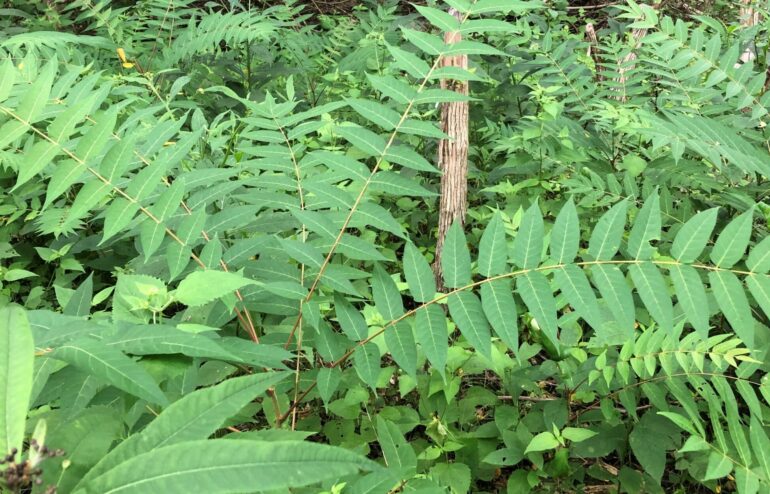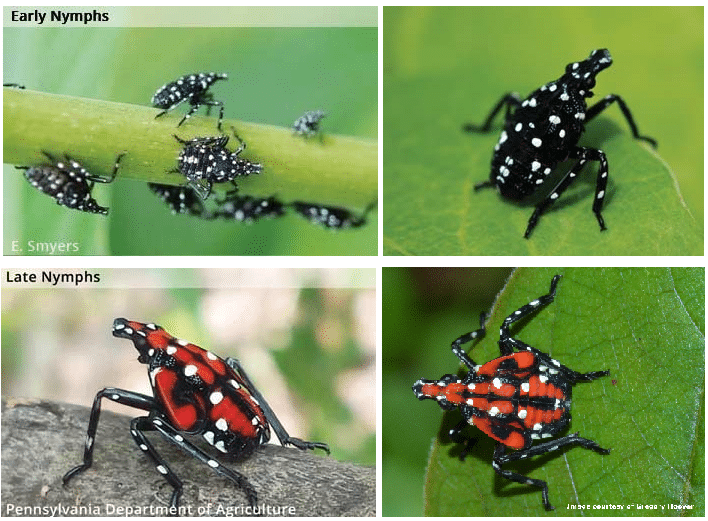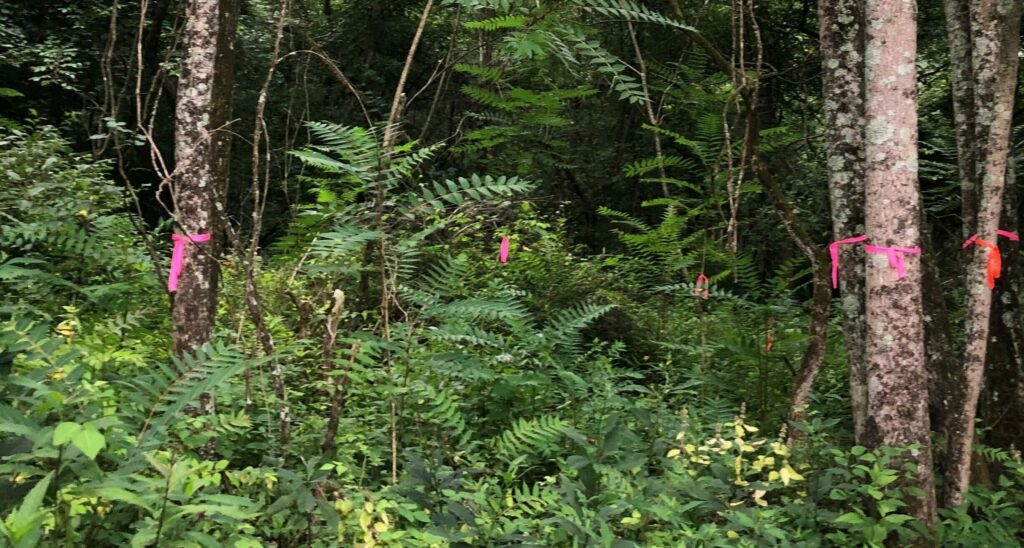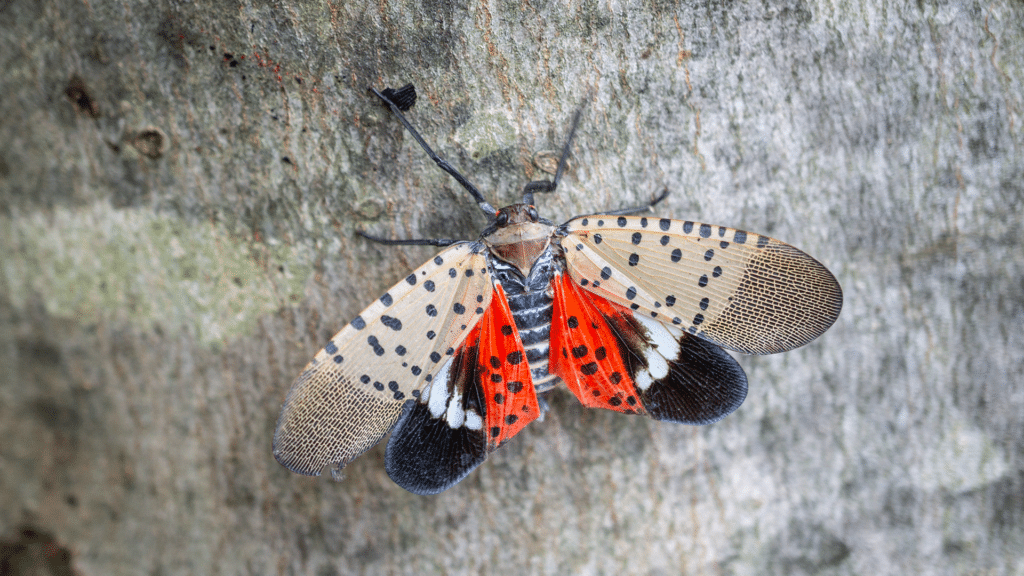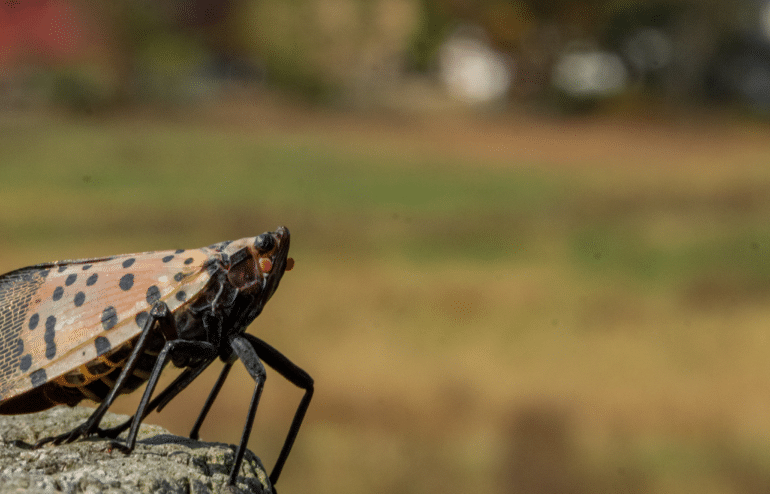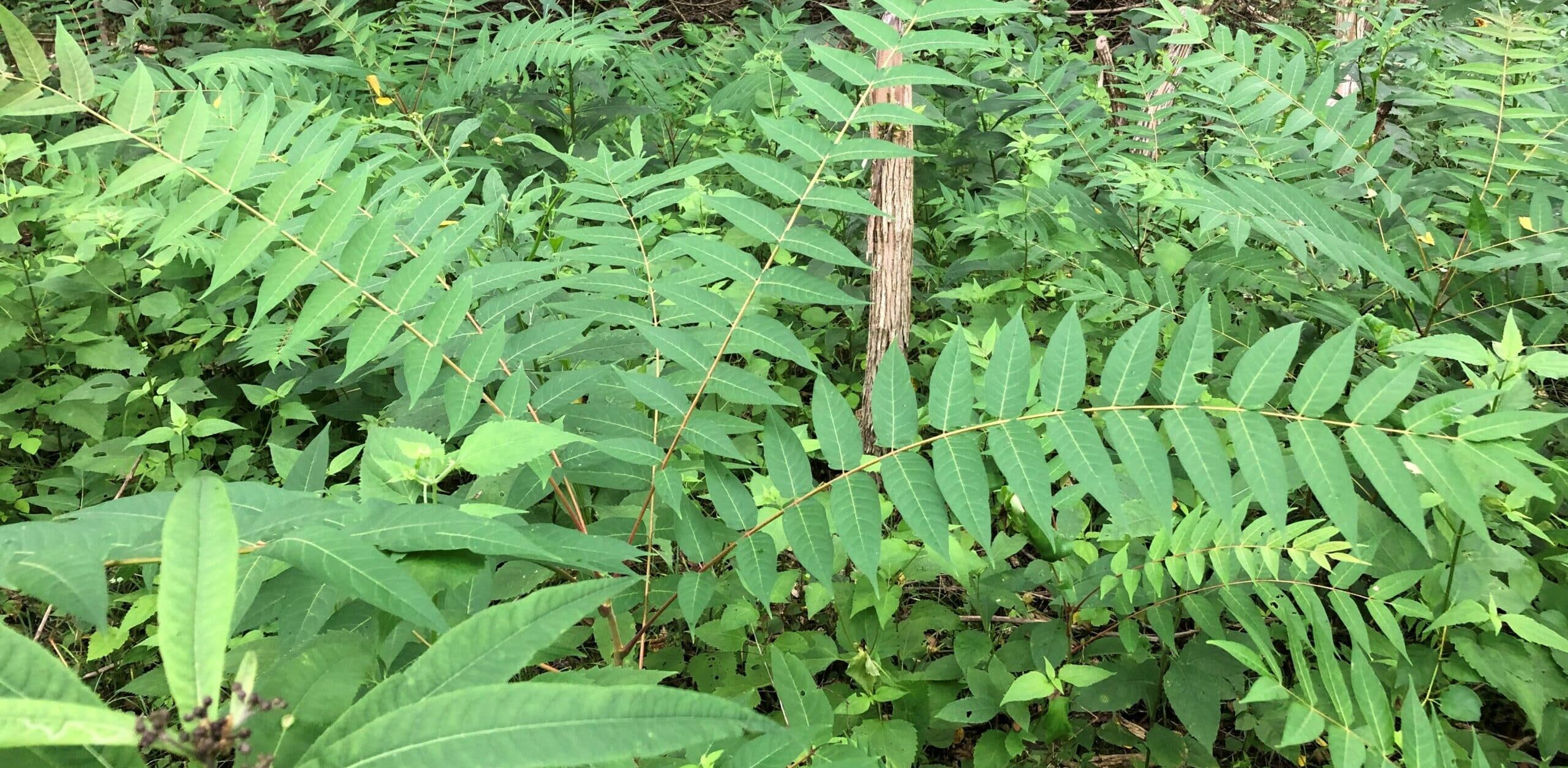
Invasive Spotted Lanternfly and Tree of Heaven:
A Double Threat to Local Ecosystems
Spotted lantern fly is once again making the news since this is the time of the year when their eggs are most visible. This invasive insect species has been spreading across the United States since its first sighting in Pennsylvania in 2014. Unfortunately, it reached Ohio last year, and the extent of this insect’s impact is not fully understood.
The spotted lanternfly is a type of planthopper, which means that it feeds on plant sap using its piercing mouthparts. They can cause significant damage to trees by feeding on their sap, which can weaken the tree, making it more susceptible to disease and other pests, and even killing it in severe cases. One tree to keep an especially close eye on is tree of heaven, a favorite of the lantern fly.
Tree of heaven (Ailanthus altissima) is also an invasive species that has become problematic in many parts of the country, including Ohio. It is highly successful due to its ability to produce clones in addition to over 300,000 seeds per year. These trees are also allelopathic meaning they can secrete chemicals into the soil that inhibit the growth of surrounding native vegetation. Greenacres is currently in the process of developing in-house methods to control tree of heaven.
What can be done to address this double threat to local ecosystems?
- Report any sightings of spotted lanternflies or tree of heaven using the form or QR code found at Ohio Department of Agriculture.
- Remove or treat any tree of heaven growing on your property. This can be done using methods such as herbicides, cutting and stump treatment, or girdling. However, care should be taken not to disturb or harm other plants in the area.
- Encourage the growth of native plant species in your garden or landscaping. Native plants are adapted to the local environment and provide food and habitat for a variety of insects, birds, and other wildlife.
By working together, we can help protect our local ecosystems from the negative impacts of invasive species like the spotted lanternfly and tree of heaven. If you have any questions or concerns, don’t hesitate to reach out to Greenacres or other local organizations for advice and support.

